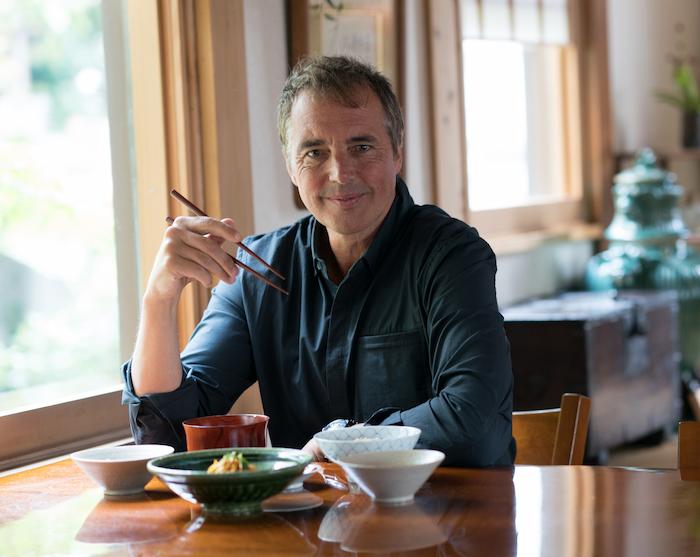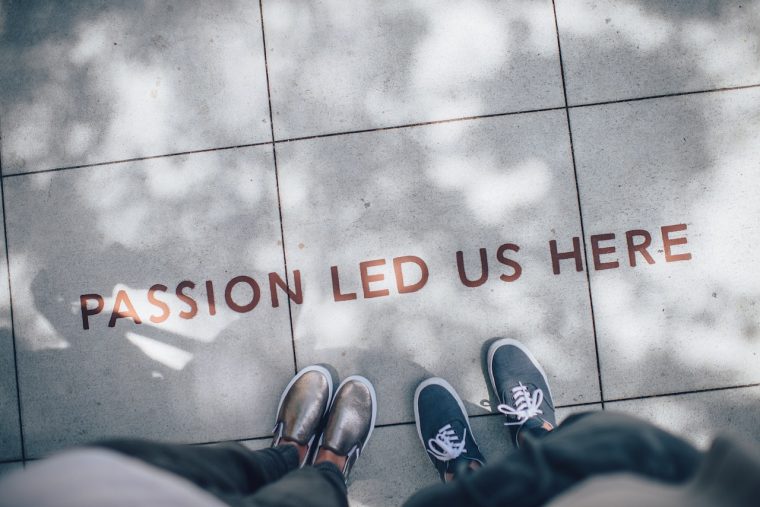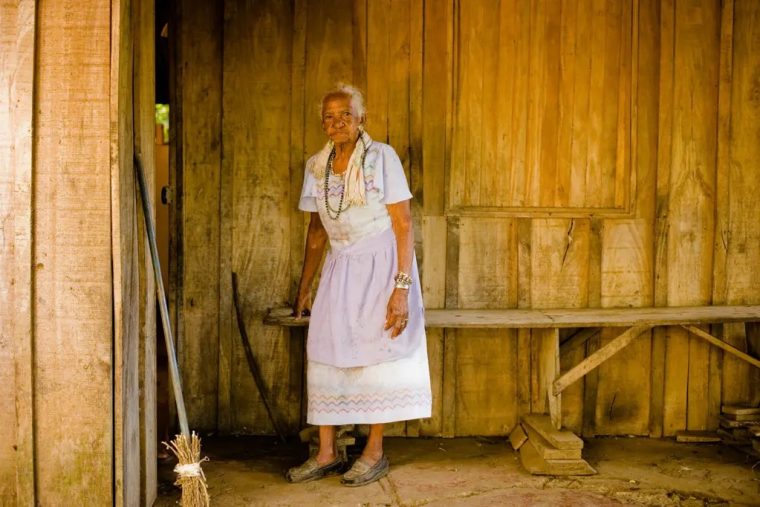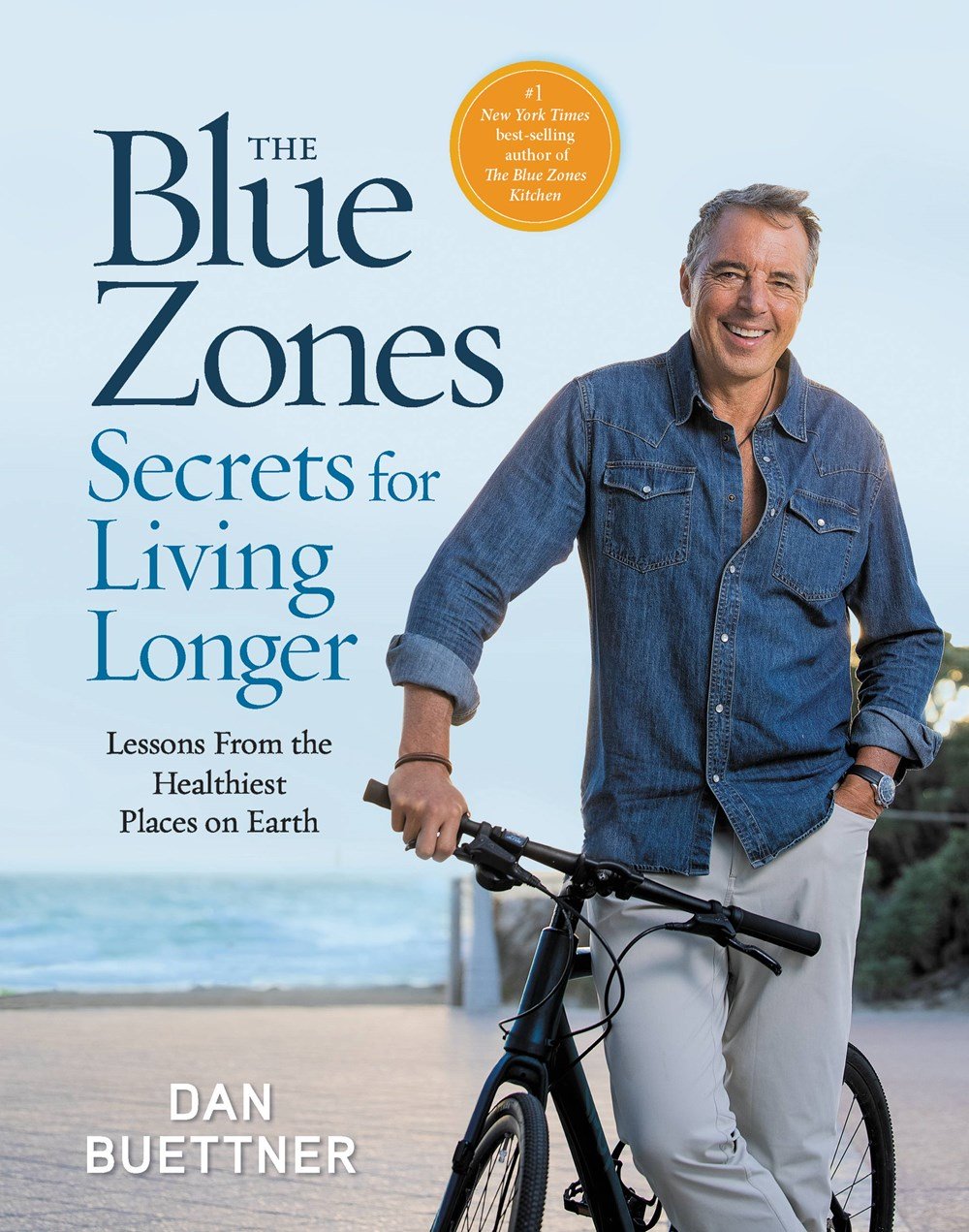Have you ever noticed how much we Westerners pride ourselves on being busy?
Imagine that you run into an acquaintance or old colleague, someone you haven’t seen in a while. If they ask you how you’ve been, there’s an excellent chance you’ll reply with some form of “busy” and that you’ll feel good about giving this answer.
On one level, that’s just a small-talk answer to a small-talk question. “Busy” is often an accurate-enough summary of our lives, one that concisely covers the good and the bad (and/or begins to explain why you’ve not been in touch) without leaving an opening for follow-up questions. It’s perfect small talk because it says everything and nothing in just two syllables. 😆
At the same time, I think we’ve all seen (if not participated in) the kind of pissing contests that busy people can have about their busyness… and this should suggest that there’s something bigger and deeper going on here. There’s social value in being able to say you’re busy, but there can also be something satisfying and fulfilling about actually being busy—and one of my tasks today is to pry those two ideas apart, because the latter is healthy and the former is toxic.

To the extent that blue-zoners are busy, it’s because their goals and interests naturally fill up their time, NOT because they see an empty space on the calendar and worry about what it means.
Appropriately enough, one of Nature’s best illustrations of the healthy kind of busyness (the kind where nobody rushes, yet everything gets done) are the very same honey bees that we often compare ourselves to. 🐝
So we’ll actually start by discussing the miracle known as honey in today’s first main article—and then, for the second article, we’ll resume this talk about human busyness with some blue-zone perspective and advice.

I’ve mentioned before that certain natural ingredients (like garlic) seem borderline magical, and honey is another one of those quasi-magical ingredients. There’s nothing quite like it, and it even seems to bend the usual rules of science in places.
We’ll break this chat into three main pieces…
- What honey actually is and how it’s made
- Honey’s unique scientific properties and why they’re useful
- Some practical pointers on using and enjoying honey
Without further ado, let’s get into the first one! We all know that bees are involved, but… what is honey, specifically, and how do the bees make it?
Bees get most of their energy (think “carbs”) from nectar, a liquid sugar that flowers excrete to attract pollinating insects; picture bees hovering around gardens in the springtime, sucking up the nectar one flower at a time. As they do so, the nectar is going into two different stomachs: a smaller one that makes immediate use of the energy and a larger one that functions as a storage tank. Bees will harvest nectar from hundreds or even thousands of flowers before their “tank” gets full and they have to return to the hive.
When a bee returns to the hive with a “full tank” of nectar, they methodically regurgitate that tank into the honeycomb structure. That may sound crude, but they have a whole elaborate process with a great many nuances; for example, they work to make sure that the nectar forms bubbles so that water evaporates from it faster. Something else that’s really neat: bees have a rare ability to generate excess body heat on demand, and at times they will deliberately raise the temperature of the hive to kill off any yeast and bacteria that would otherwise multiply and devour the sugar—all of which basically means that bees can pasteurize their own honey. 😲
It takes time for all of their collected nectar to become honey, but the end result for the bees is that the majority of food they ever collect goes into a giant “savings account” that the whole colony can use to feed itself for quite some time if necessary. Not only is there a lot of storage space in the hive, but honey is far more nutrient- and energy-dense than the nectar it came from (because nectar is about 70% water and honey is about 20% water)!
Bottom line: honey is flower nectar that has been collected, distilled, stored, and even semi-pasteurized by bees. And yes, we do need the bees to make it for us—not just because Nature has perfected their method, but because the bees contribute some of the enzymes that make honey what it is.
It probably will not surprise you to read that human beings have been harvesting honey for far longer than we’ve been able to write about it. Over its long and storied history, we’ve discovered a number of honey’s impressive and peculiar properties, of which I’ll cover three:
1️⃣ When properly sealed, it’s completely impervious to spoilage. Archaeologists have eaten samples of honey which are, I kid you not, thousands of years old and still basically unchanged. Honey is not the only food item that can make this claim—rice, salt, and even sugar can survive indefinitely if properly sealed—but it’s still surprising that honey (a thick, sweet syrup) can make this claim at all.
How is this possible? Three specific properties of honey that explain it:
- There’s very little water in honey—only about 18% by volume, to be specific—and this basically means that it “smothers” anything unlucky enough to fall into it, almost like quicksand. Technically speaking, honey is a supercooled solution; it contains more sugar than you could possibly dissolve in water yourself.
- Honey is surprisingly acidic; its pH tends to fall between 3 and 4.5, and not a whole lot can survive in that.
- Hydrogen peroxide—the very same antiseptic agent you probably have in your house—is found in honey because it’s one of the byproducts of the enzymatic reactions from the bees’ stomachs. So honey isn’t just generally hostile to germs; it literally contains a germ-killing compound! On that note…
2️⃣ It’s surprisingly helpful for the treatment of wounds and burns. Spreading honey over your skin might sound as weird as lathering up with olive oil—if not even weirder, because honey is sticky and we don’t like feeling sticky. But to an ancient healer, the aforementioned suite of antiseptic properties made honey a godsend.
When you have a wound, how do you treat it? You make sure it’s clean so that it doesn’t get infected, then you do your best to cover it so it can heal. Honey accomplishes both and then some: nothing can grow in it, it seals the wound, and it even helps to draw out water and exchange it with hydrogen peroxide (both of which help to prevent infection).
3️⃣ A lot of people find that it soothes seasonal allergies. Just to be clear, mileage varies from person to person, and even the people who swear by honey won’t usually say it’s a silver bullet for their seasonal allergies. Still, wherever it helps, the logic goes something like this:
- The majority of seasonal allergens come from flowering plants, and what we call “allergies” are our immune systems’ (over)reactions to those allergens.
- What becomes “honey” is drawn as nectar from many of the same plants whose allergens (like pollen) cause seasonal allergies.
- By consuming that honey, you’re essentially inoculating yourself against seasonal allergies because you’re “introducing” your immune system to plant matter from the same plants as the allergens.
- Regardless, honey is soothing.
If that sounds like something you’d want to try (again), you’ll want to read my first piece of practical advice carefully…
… and so, to wrap things up, here are two quick pieces of advice on how to best use honey:
🅰️ For combating allergies, you want local honey that has been processed as little as possible. This means, first of all, that you probably won’t be looking for a plastic bear-shaped bottle. By and large, plastic-bear grocery-store honey has been processed to within an inch of its life and no longer contains the micronutrient matter you want for allergy-fighting purposes.
Just as important, you want local honey because that’s the only way honey’s “inoculation” can perfectly match the allergens you’re actually exposed to. The same way that a measles vaccine doesn’t protect against the flu, Texas honey won’t do much to help you with Tennessee allergies.
🅱️ For general usage, honey can replace sugar at a 1-to-1 ratio. In other words, a teaspoon of honey contains about as much sugar as a teaspoon of table sugar, and it tastes about as sweet too. This means that you can replace sugar with the same amount of honey in a LOT of different applications.
Honey can even be caramelized just like regular sugar! It’s harder to do with honey (the heat has to be very low and very even), but the fact that it’s even possible speaks to its versatility in the kitchen.

With the buzzing of bees and sweet taste of honey still on our minds, let’s return to the topic of “busyness” and how its character is vastly different between the blue zones and the rest of us.
It’s important to realize first that “being busy” is neutral in and of itself; whether that’s a good experience or a bad experience depends on what you’re busy doing. If your life is full of things you can’t get enough of, then being busy makes you practically beatific. Conversely, and to paraphrase Dostoyevsky, the surest way to crush someone’s spirit is to busy them with work that they find utterly meaningless.
When it comes to being “busy,” I can think of two main differences between blue zoners and ourselves. The first difference is cultural and philosophical and there’s no easy remedy for it—but by mentioning those parts first, it’ll be easier to see how the second difference brings some practical solutions into clear focus.
That first (cultural and philosophical) difference is, in a phrase, our priorities and our relationships with time. Everyone would probably agree that time is the most precious resource in life, but we can draw vastly different conclusions from that shared premise.
As a whole, people in the blue zones seem to understand what Omar Khayyam meant when he said: “Be happy for this moment. This moment is your life.” They understand, in other words, that time is not just a resource in life which you can trade for other things; it’s also the resource of life, the sum of all the moments in which you actually experience life. Simply put, they make it a point to savor the many moments; where some of us see “wasted time,” they see time well spent.
Westerners are not wrong to think of time as a precious and finite resource—again, we’re all in agreement there—but we can sometimes extrapolate that logic beyond its healthy limits, especially when we’re ambitious. Human beings are notoriously bad at knowing what they really want, and if we think we want something more than “enjoying the time that is life,” we trade more and more of that time away. We feel more and more hurried; we cut more and more corners in other parts of our lives; we’re forced to delegate or outright sacrifice activities we’d have wanted to keep. And of course, as with any Faustian bargain, there’s no guarantee that you’ll get what you really want (or that you’ll enjoy it) in the end.
As I said, there’s no easy way of untangling our priorities and relationships with time, no simple prescription for getting them free and clear and healthy like you see in the blue zones. But there is still a relatively simple way to get more of that peace and clarity that blue zoners enjoy in their time, and that brings me to the site of the second big difference between us: the calendar.
I won’t say that blue-zoners obsess over their calendars like some of us can, but in its basic form, a calendar is something that any human being might use. So, for the purposes of discussion, let’s just say that everyone in the world uses some kind of calendar.
The second main difference is, in my view, pretty simple and practical: how people see the blank spaces on their calendars.
In America (from which I hail) and across the Western world, blank spaces are generally not good. At best they tend to be hiccups in your schedule and, at worst, they’re harbingers of existential doom. We feel about blank spaces like we do about silences in conversation: like there’s something wrong if the space is left empty, and we need to figure out what we’re doing with it (whether or not the time is spent productively). This stems partly from thinking of the calendar as a time management tool and thinking of blank spaces as “wasted time,” a cardinal sin nowadays.
In the blue zones, calendars (to the extent that people use them) are more of a descriptive tool, something that simply keeps track of time rather than seeking to manage it in a certain way. To a blue-zoner, calendars only tell you what you have planned, not what you “should” be doing—and in turn, this means that blank spaces are allowed to be as meaningless as they should be. A blank space simply means that you don’t have plans, nothing more and nothing less.
My advice to you is simple, and you can interpret the details to your liking: leave some spaces blank on purpose, even if it runs contrary to your instincts. It might bug you at first, but you’ll be surprised at the peace it can afford you if you trust it and stick with it for a while.
The first thing that will probably happen is that the spaces you leave blank get “absorbed” by other things needing your attention; in other words, you wind up re-allocating that time and using it for something.
You won’t have learned much from the new habit yet, but you’ll still find that you greatly appreciate those little bits of buffer and breathing room, and this is still a great start. I’m not sure I love thinking of life as a never-ending puzzle in need of solving, but if you must think that way, I would argue that life is one of those puzzles that requires an empty space for the pieces to move around.
The next thing that will probably happen—assuming you continue to leave the occasional space blank on purpose—is that, at some point, life will hit one of its lulls and your blank space will somehow stay blank. If the appointed time comes and it’s still blank, you might not know what to do… but this is when your brain has an opportunity to escape its usual boundaries a little bit.
If you keep it up, the time will come when a blank space pops into your life (almost unexpectedly) and you know what you want to do with it. It becomes a time when your brain is clearer, more relaxed, and more creative simply because it feels free to decide what it wants before acting. It is, in other words, a reminder that you can choose what you want to do with your time, in senses both large and small.
It’s not much, but it’s a starting point… and since the world doesn’t seem to be slowing down, I’m sure there’ll be more opportunities to share advice in that direction later. 😎

Broccoli Peanut Soup

Ingredients
1 1/2 tablespoons olive oil
2 large onions, chopped
2 cloves garlic, minced
3 medium carrots, peeled and sliced
32-ounce carton vegetable broth, or 4 cups water with 2 vegetable bouillon cubes
2 medium apples, peeled, cored, and diced
1 teaspoon good quality curry powder
2/3 cup creamy peanut butter
6 heaping cups finely chopped broccoli (mainly florets; some
tender stems are fine)
Juice of 1/2 lemon
Salt and freshly ground pepper to taste
Pinch of dried hot red pepper flakes, plus more to pass around
Chopped roasted peanuts for garnish, optional
The Method
- Heat the oil in a soup pot. Add the onions and sauté over medium-low heat until translucent. Add the garlic and carrots and continue to sauté until all are golden.
- Add the broth along with the apples and curry powder. Bring to a slow boil, then lower the heat. Simmer gently over low heat with the cover ajar for 10 to 15 minutes, or until the carrots and apple are tender. Remove from the heat.
- Transfer the solid ingredients from the soup pot to a food processor with a slotted spoon. Process until just coarsely pureed, leaving some chunkiness. Stir back into the soup pot. Or, skip the food processor and insert an immersion blender into the pot and process until coarsely pureed.
- Add the peanut butter to the soup, about half at a time, whisking it in until completely blended. Return to very low heat.
- Steam the broccoli in a saucepan with about ¼ cup water, covered, for 5 minutes, or until brightly green and tender-crisp to your liking. Stir into the soup.
- If the soup is too thick, add enough water to give it a medium-thick consistency. Stir in the lemon juice, then season with salt, pepper, and red pepper flakes.
- Serve at once. Pass around more red pepper flakes and chopped peanuts for topping individual servings, if desired.





